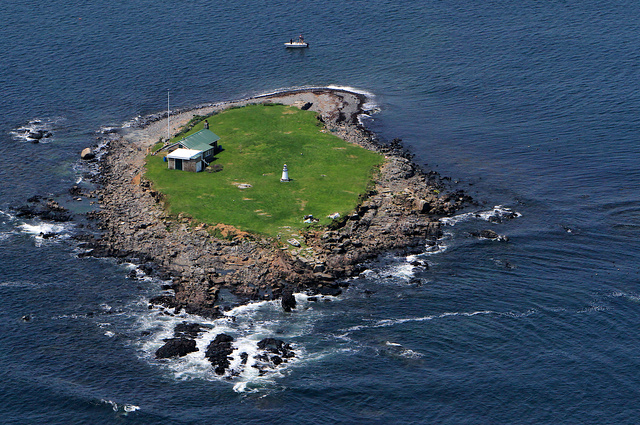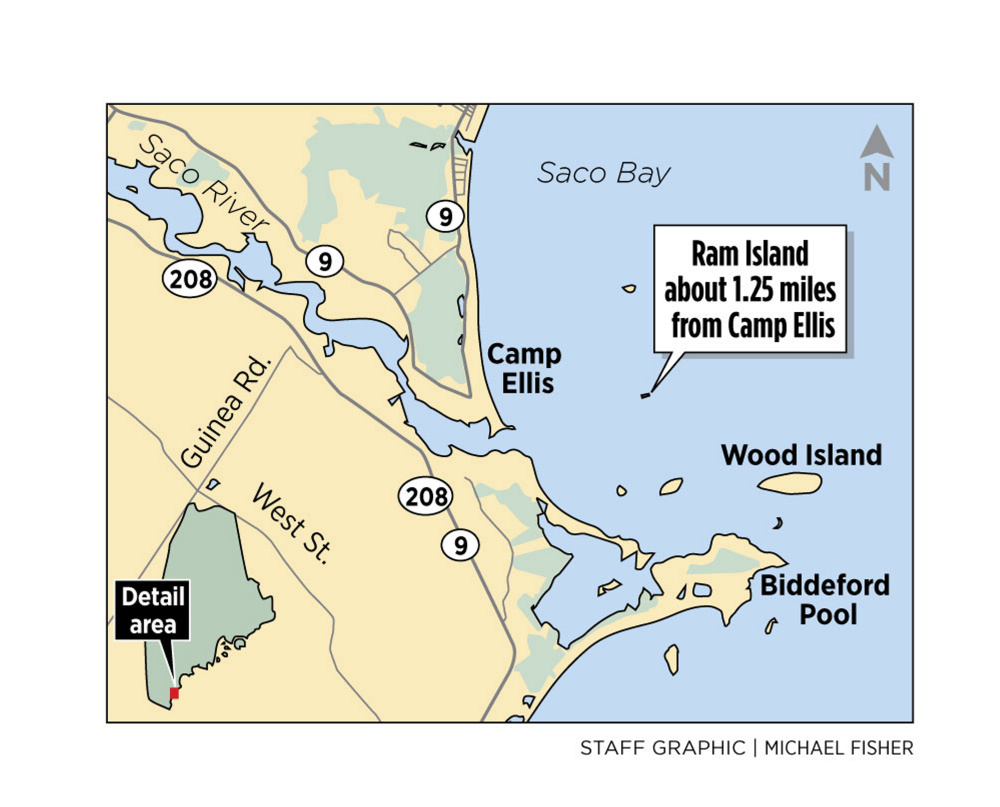The University of New England has begun using an island two miles off the coast of Saco as a “living laboratory” to study ocean life and the effects of climate change thanks to a Portland real estate developer who gave the family property to the school.
“It’s kind of a marine biology dream,” Barry Costa-Pierce, chairman of the UNE marine sciences department, said of Ram Island. “We plan on being a steward of a place that’s really special.”
Donated by Art Girard, the one-acre island roughly doubles in size at low tide, Costa-Pierce said. The island and its surrounding waters are home to migrating songbirds, lounging harbor seals, lots of dogfish sharks and various intertidal flora and fauna, he said.
The low-lying island has a 500-square-foot house on it and has been used as a summer vacation spot by private owners.
Girard, whose family bought it for $140,000 in 1999, said Monday that the gift to the local university was “a match made in heaven.”
“They’re really going to do some great things,” said Girard, who lives down the street from UNE’s Biddeford campus. He can see Ram Island from his home in the Hills Beach area of Biddeford Pool. “I can give it away and still enjoy it every day.”
According to Saco tax records, Ram Island is assessed at $175,900 and ownership of the island was transferred to UNE in December 2014. The Gagne family owned it for more than four decades, after purchasing it in 1940 for $300.
Costa-Pierce said a small number of UNE students have been out to the island a few times since it was donated. But next year, UNE will need to acquire a boat to safely get to the island, which does not have a dock, he said. For now, flat-bottomed boats come ashore by landing on a rocky beach area, he said.
Costa-Pierce said students will use the island to study a range of marine issues, including the impact of climate change and warming Casco Bay waters on the ecosystem.
“We’re going to be able to jump right on a boat and be on our island in less than 10 minutes,” he said. “It really does expand our reach into all of the offshore issues in Maine and in the world.”
School officials are assessing how best to use the island, he said. There are no plans to expand the structure, which has a kitchen, bedroom, bathroom and storage shed. Potential additions include viewing platforms or remote cameras or video feeds of island life, he said.
“We need to understand our opportunities,” he said of how the department will use the island. “We want students to get a heavy dose of real reality of the ocean in the 21st century, rather than go out there with some directed plan.”
Costa-Pierce said readings from future Ram Island equipment would complement two other UNE data collection sites: a buoy off Ram Island that monitors ocean conditions and a weather station on top of UNE buildings on shore.
The island expands UNE’s ability to offer experiential learning to its students, he said. There are currently about 200 students in the department, which offers multiple majors and marine science tracks.
Girard, a commercial developer, has had a long interest in philanthropy and lighthouses. In 2010, he lost a bidding war – by a coin toss – to purchase Ram Island Ledge lighthouse off Cape Elizabeth, then successfully purchased the Boon Island Light Station off York last year.
Last year, Girard donated $1 million to the Animal Refuge League of Greater Portland for a new 25,000-square-foot shelter at its Westbrook location.
Send questions/comments to the editors.




